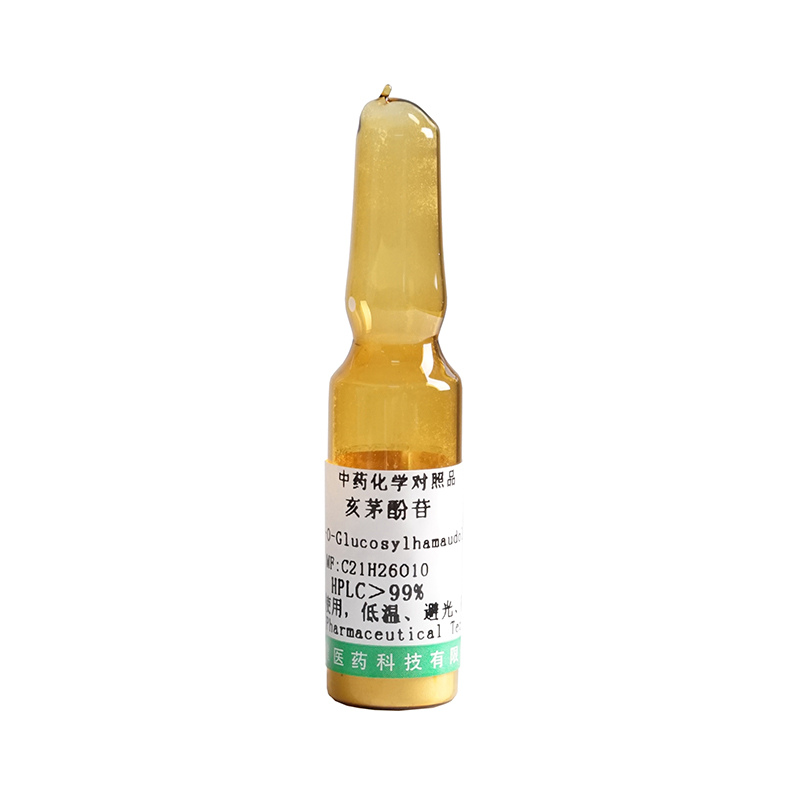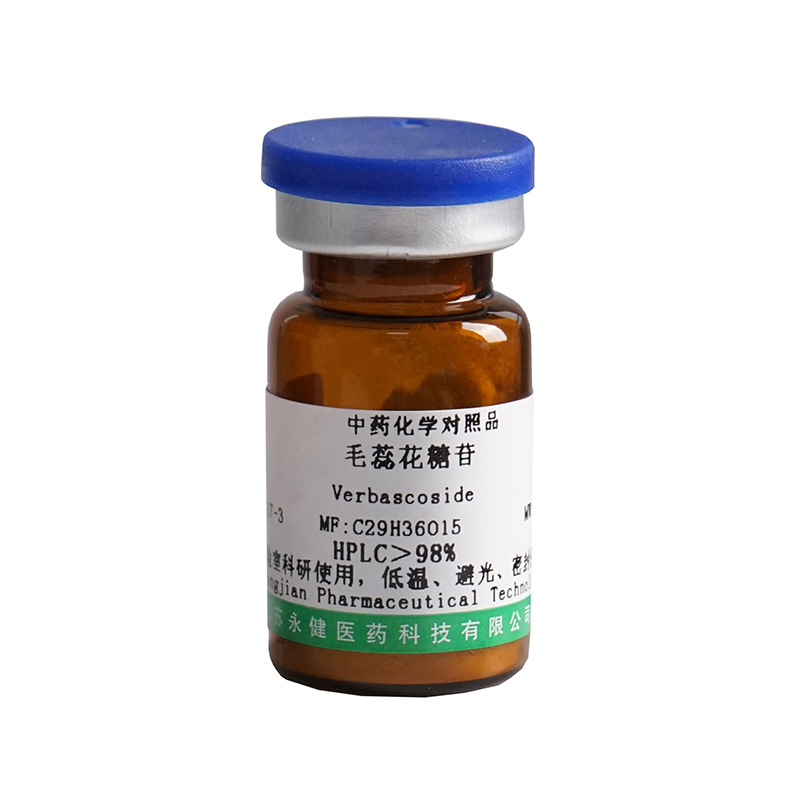OEM/ODM Factory Cas No.491-50-9 - Ammonium Glycyrrhizinate – Yongjian
OEM/ODM Factory Cas No.491-50-9 - Ammonium Glycyrrhizinate – Yongjian Detail:
Application of Ammonium Glycyrrhizinate
Monoammonium glycyrrhizinate hydrate has pharmacological activities such as anti-inflammatory, anti allergic, anti gastric ulcer and anti hepatitis.
Name Of Ammonium Glycyrrhizinate
Chinese Name:
Ammonium Glycyrrhizinate
English Name:
glycorrhizic acid ammonia salt
Chinese Alias:
glycyrrhizic acid monoammonium hydrate | glycyrrhizic acid monoammonium hydrate | glycyrrhizic acid monoammonium salt | glycyrrhizic acid monoammonium salt | glycyrrhizic acid monoammonium salt hydrate | glycyrrhizic acid monoammonia
Bioactivity Of Ammonium Glycyrrhizinate
Description: monoammonium glycyrrhizinate hydrate has pharmacological activities such as anti-inflammatory, anti allergic, anti gastric ulcer and anti hepatitis.
Related categories:
signal path > > other > > other
Research field > > inflammation / immunity
In Vivo Study: the increase of lung w / D weight ratio was significantly reduced by administration of high and medium doses of mag (10 and 30 mg / kg). Pretreatment with mag (10 and 30 mg / kg) effectively reduced TNF- α And IL-1 β Generation of. Mag (10,30 mg / kg) significantly reduced NF compared with LPS- κ Bp65 protein expression. In contrast, LPS significantly reduced I compared with the control group κ B- α Protein expression, while mag (10 and 30 mg / kg) significantly increased I κ B- α Expression [1]. Compared with RIF and INH groups, low-dose and high-dose MAG treatment significantly reduced ast, alt, TBIL and TBA levels at 14 and 21 days, indicating the protective effect of MAG on RIF – and INH -. Induce liver injury. MAG treatment group increased liver GSH level at 7, 14 and 21 days, and significantly decreased MDA level at 14 and 21 days in RIF and INH treated rats, indicating the protective effect of MAG in RIF – and. INH induced liver injury [2].
Animal Experiments: mice [1] in this study, BALB / c mice (male, 6-8 weeks old, 20-25g) were used. Mice were randomly divided into 5 groups: control group, LPS group and LPS + monoammonium glycyrrhizinate (Mag: 3,10 and 30mg / kg). Each group contained 8 mice. Mice were anesthetized with intraperitoneal injection of pentobarbital sodium (50 mg / kg). Mice were injected intraperitoneally with mag (3, 10 and 30 mg / kg) before inducing acute lung injury. After 1 hour, LPS (5 mg / kg) was injected intratracheal to induce acute lung injury. Normal mice were given PBS [1]. Rats [2] used male Wistar rats (180-220g). The rats were randomly divided into 4 groups: control group, RIF and INH group, MAG low-dose group and MAG high-dose group, with 15 rats in each group. Rats in RIF and INH groups were given RIF (60mg / kg) and INH (60mg / kg) by gavage once a day; Rats in MAG group were pretreated with MAG at the dose of 45 or 90 mg / kg, and RIF (60 mg / kg) and INH (60 mg / kg) were given 3 hours after MAG administration; The rats in the control group were treated with normal saline. In order to evaluate the dynamic effect of the drug, the rats in each group were killed 7, 14 and 21 days after administration [2].
Reference:1]. Huang X, et al. Anti-Inflammatory Effects of Monoammonium Glycyrrhizinate on Lipopolysaccharide-Induced Acute Lung Injury in Mice through Regulating Nuclear Factor-Kappa B Signaling Pathway. Evid Based Complement Alternat Med. 2015;2015:272474.
[2]. Zhou L, et al. Monoammonium glycyrrhizinate protects rifampicin- and isoniazid-induced hepatotoxicity via regulating the expression of transporter Mrp2, Ntcp, and Oatp1a4 in liver. Pharm Biol. 2016;54(6):931-7.
Physicochemical Properties of Ammonium Glycyrrhizinate
Density: 1.43g/cm
Boiling point: 971.4 º C at 760mmhg
Melting Point: 209 º C
Molecular Formula: c42h65no16
Molecular Weight: 839.96
Flash Point: 288.1 º C
PSA:272.70000
LogP:0.32860
Appearance: white crystalline powder
Refractive Index: 49 ° (C = 1.5, EtOH)
Storage Conditions: sealed and stored at 2 º C – 8 º C
Stability: if used and stored according to specifications, it will not decompose and there is no known dangerous reaction
Water Solubility: slightly soluble in water, very slowly soluble in anhydrous ethanol, practically soluble in acetone It dissolves in dilute solutions of acids and of alkali hydroxides.
Ammonium Glycyrrhizinate MSDS
Ammonium Glycyrrhizinate MSDS
1.1 product identifier
Ammonium Glycyrrhizinate comes from licorice root (licorice)
Product name
1.2 other methods of identification
Glycyrrhizin
3-O-(2-O- β- D-Glucopyranuronosyl- α- D-glucopyranuronosyl)-18 β- glycyrrhetinic acidammonium salt
1.3 relevant identified uses of substances or mixtures and suggested unsuitable uses
Only for scientific research purposes, not as drugs, family standby drugs or other purposes。
Ammonium Glycyrrhizinate Safety Information
Personal protective equipment: eyeshields; Gloves; type N95 (US); type P1 (EN143) respirator filter
Dangerous goods transport code: UN 3077 9 / pgiii
Wgk Germany: 2
RTECS No.: lz6500000
Preparation of Ammonium Glycyrrhizinate
It can be refined with acid ethanol as raw material.
Ammonium glycyrrhizinate literature
The HMGB1 protein sensitizes colon carcinoma cells to cell death triggered by pro-apoptotic agents.
Int. J. Oncol. 46(2) , 667-76, (2014)
The HMGB1 protein has multiple functions in tumor biology and can act both as a transcription factor and as a cytokine. HMGB1 is released during cell death, and in our previous studies we demonstrated…
TLR9 activation is triggered by the excess of stimulatory versus inhibitory motifs present in Trypanosomatidae DNA.
Glycyrrhizin reduces HMGB1 secretion in lipopolysaccharide-activated RAW 264.7 cells and endotoxemic mice by p38/Nrf2-dependent induction of HO-1.
Int. Immunopharmacol. 26 , 112-8, (2015)
High mobility group box 1 (HMGB1) is now recognized as a late mediator of sepsis. Although glycyrrhizin was known as inhibitor of HMGB1, it is not yet clear underlying mechanism(s). We found that glyc…
English Alias Ammonium glycyrrhizinate
GLYCAMIL
Ammoniumglycynhizinato
glycyrrhizic acid monoammonium salt
ammonium glycyrrhizinate
MFCD00167400
Glycyrrhizin Monoammonium Salt Hydrate
Glycyrrhizic Acid Monoammonium Salt Hydrate
(3β)-30-Hydroxy-11,30-dioxoolean-12-en-3-yl 2-O-β-D-glucopyranuronosyl-α-D-glucopyranosiduronic acid diammoniate
GLYCYRRHIZICAMMONIUM
Magnasweet
ammoniate
Monoammonium Glycyrrhizinate Hydrate
Glycyrrhizate monoammonium
Product detail pictures:

Related Product Guide:
We're proud from the higher client fulfillment and wide acceptance due to our persistent pursuit of high quality both on product and service for OEM/ODM Factory Cas No.491-50-9 - Ammonium Glycyrrhizinate – Yongjian , The product will supply to all over the world, such as: Sheffield, Bahamas, Barbados, we are fully determined to control the whole supply chain so as to provide quality products at competitive price in a timely manner. We are keeping up with the advanced techniques, growing through creating more values for our clients and society.
Company director has very rich management experience and strict attitude, sales staff are warm and cheerful, technical staff are professional and responsible,so we have no worry about product,a nice manufacturer.






